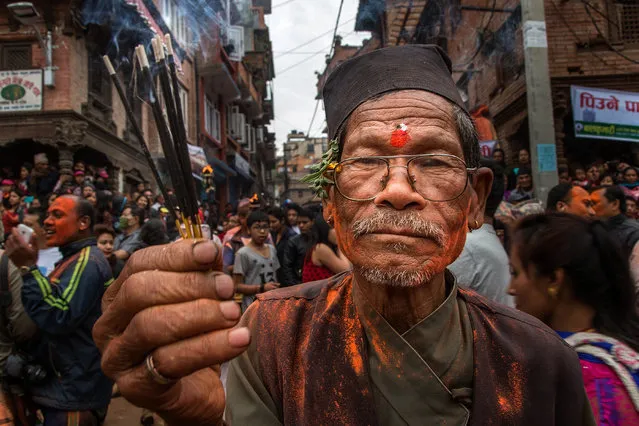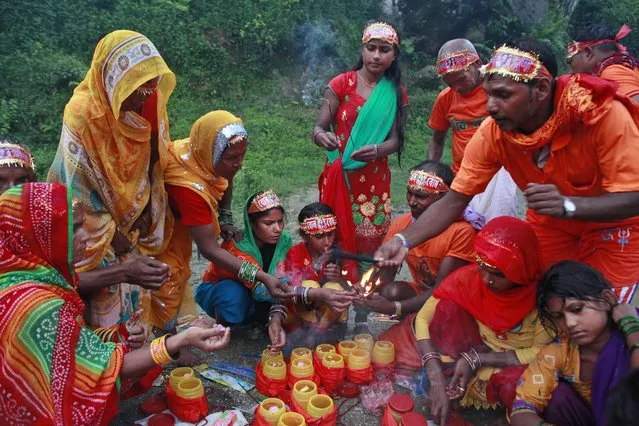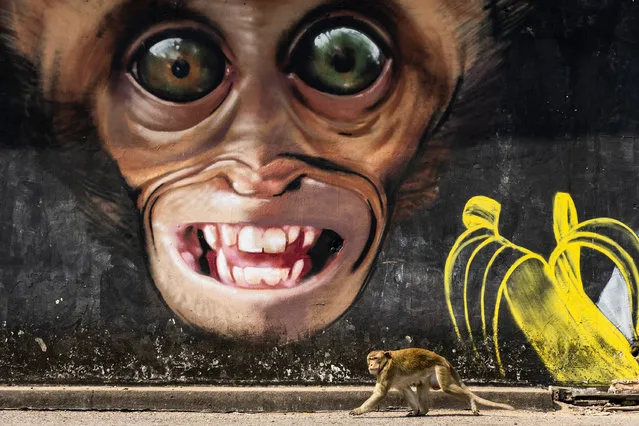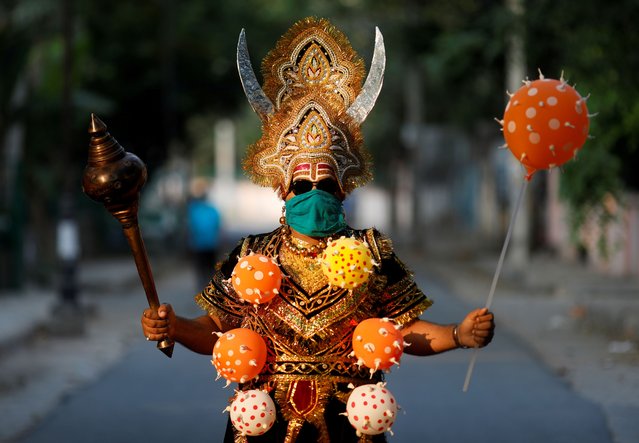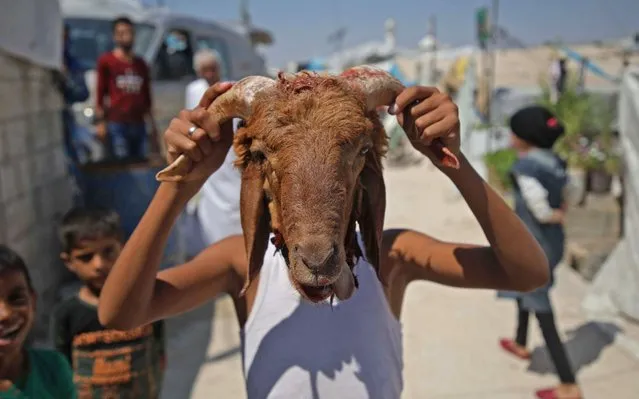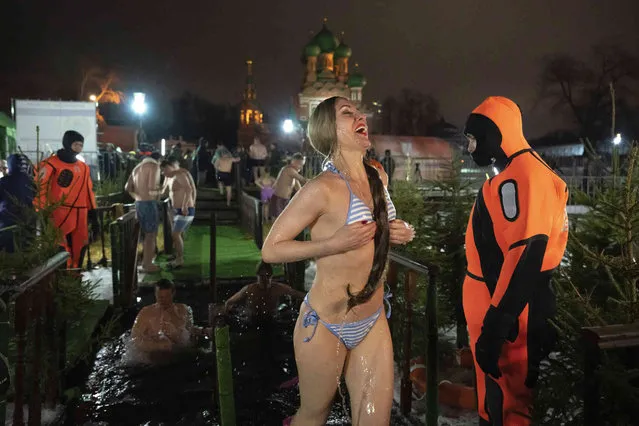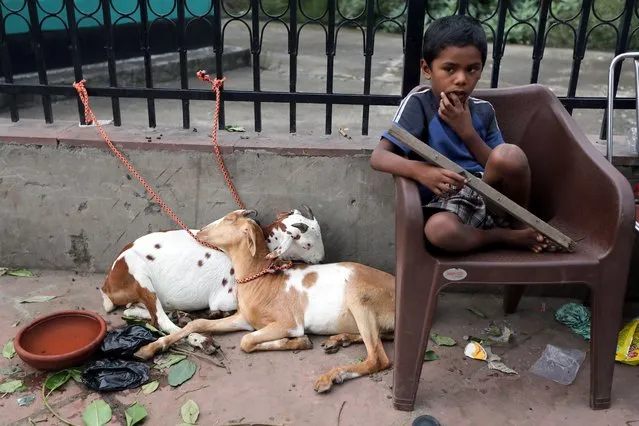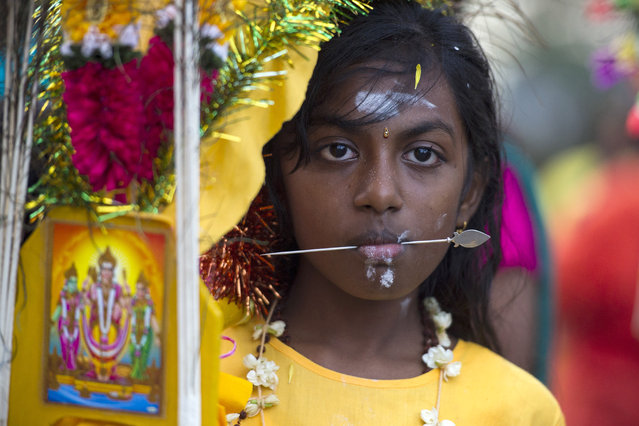
A Hindu devotee girl stands after getting her tongue pierced with a metal rod during the Thaipusam festival in Kuala Lumpur, Malaysia, Tuesday, February 3, 2015. Thaipusam, which is celebrated in honor of Hindu god Lord Murugan, is an annual procession by Hindu devotees seeking blessings, fulfilling vows and offering thanks. (Photo by Joshua Paul/AP Photo)
04 Feb 2015 12:48:00,post received
0 comments

